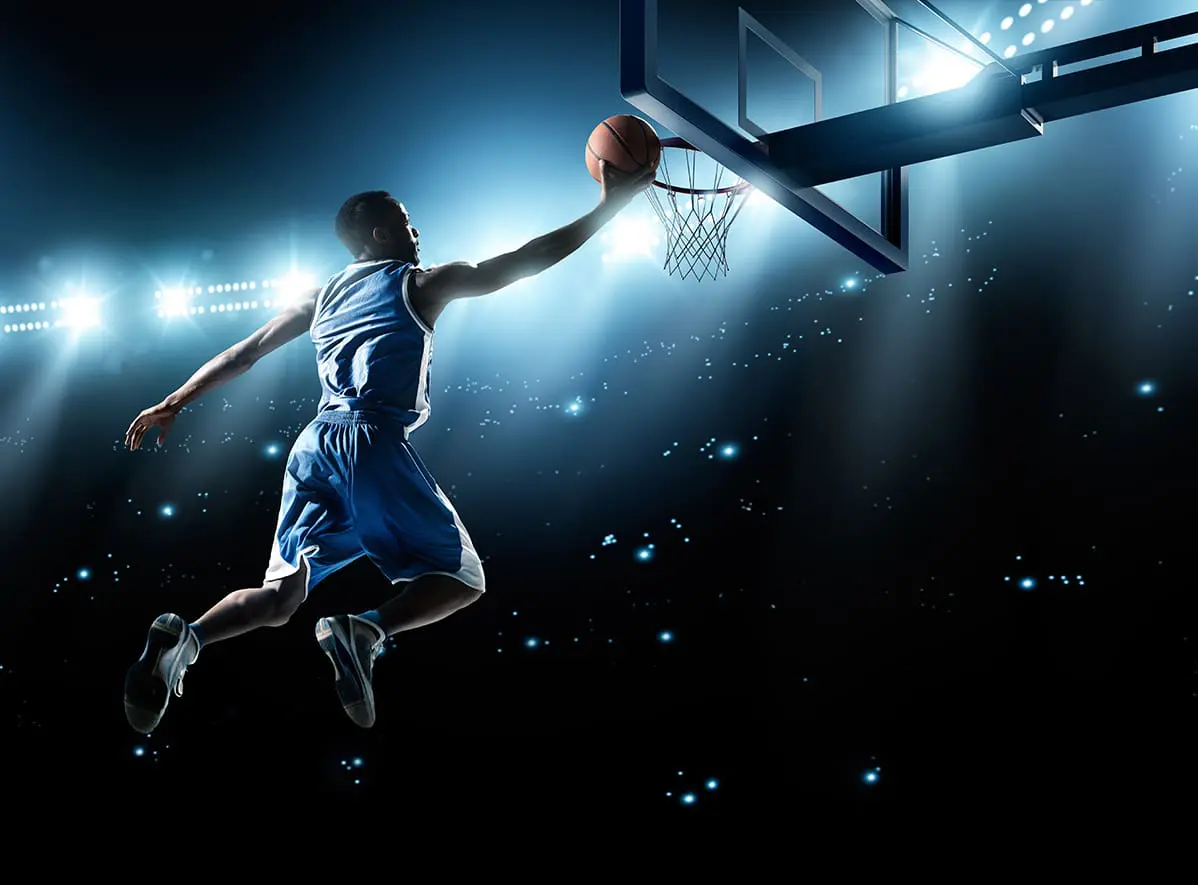Laser Therapy is a Slam Dunk for Basketball Injuries
Guest Blog by Perry Nickelston DC, NKT, FMS, SFMA

Basketball players stack up the miles – both on the court and on their bodies. Fouls, falls, and failure to rest lead to acute and chronic injuries that can end games and occasionally careers. Prevention and treatment of these injuries is a primary concern for practitioners and players alike.
Laser therapy is helping to address this concern by quickly and effectively treating pain and inflammation related to numerous common basketball-related injuries. Here are 3 common basketball injuries and the recommended treatment protocols for each:
Ankle Sprains:
The most common basketball injury is the ankle sprain. This injury often occurs when a player lands on another player’s foot or the ankle rolls inward (inversion) during a pivot motion, stretching and tearing ligaments (partially or completely). Treatment for ankle sprains often involves immobilization via casting or taping, ultrasound or muscle stimulation.
Laser therapy is also a very effective modality to help reduce swelling and pain, and to accelerate recovery time. Laser light triggers ATP production to accelerate the repair of damaged cells and growth of healthy new cells, including those that make up cartilage (chondrocytes), bone (osteocytes), and connective tissue (fibroblasts). The sooner you can apply laser therapy to an ankle sprain, the quicker the recovery will be.
Treatment suggestions:
Acute stage: Lower power (5-6 W) and lower dosages (6-7 J/cm2), with an average total dose of 1,500 J. Treat daily for 3 days and then every other day. Total number of sessions depends on the client.
Chronic stage: Higher power (10-15 W) and higher dosages (8-10 J/cm2), with an average total dose 3,000 J. Treat every other day for 4-6 sessions.
Knee Injuries
Knee injuries are some of the most serious basketball related injuries. Knee sprains, meniscus tears and ACL tears occur often. To help the injuries heal, immobilization is often a first go-to option for treatment. After rest, progression to stretching and strengthening exercises is typical if surgery is not indicated.
In addition to rest and strengthening exercises, decreasing inflammation helps further the recovery process. Laser light fights excess inflammation by increasing the anti-inflammatory cytokines that bring chronic inflammation to an end. They lower the number of neutrophil cells that can contribute to chronic inflammation, and they increase the number of macrophage cells in the immune system, helping to remove damaged cells.
Treatment suggestions:
Treat areas surrounding and including the location of pain in an off-contact method.
Acute stage: Lower power (5-6 W) and lower dosages (6-7 J/cm2), with an average total dose of 1,500 J. Treat daily for 3 days and then every other day. Total number of sessions depends on the client.
Chronic stage: Higher power (10-15 W) and higher dosages (8-10 J/cm2) with an average dose 3,000 J. Treat every other day for 4-6 sessions.
Overuse Injuries
Relentless practice and a demanding competitive game schedule can lead to overuse injuries. The constant start, stop, pivot, acceleration and deceleration motions can put strain on joints and soft tissue.
One common overuse injury is patellar tendinitis, or “jumper’s knee,” which is characterized by pain in the tendon just below the kneecap. Achilles tendinitis is another common overuse injury, causing pain in the back of the leg and foot that can often take a player out of competition for extended periods of time. Players who engage in repetitive shooting motions also frequently suffer from tendinitis in the rotator cuff and elbow that can drastically impact their ability to shoot effectively.
Laser therapy is a great option for treating injuries such as this because it preferentially affects damaged cells, or cells that are struggling to function and need cellular energy the most. Cells that have a limited blood supply and lack of oxygen due to poor circulation are more sensitive to near-infrared laser light than are well-functioning cells.
Treatment suggestions:
Acute stage: Lower power (6-7 W) and lower dosages (6-7 J/cm2), with an average total dose of 1,800 J. Treat daily for 3-5 days and then every other day. Total number of sessions depends on the client progress. Use the open cone attachment for bony areas and the massage ball for deeper tissue.
Chronic stage: Higher power (10-15 or more W) and higher dosages (10-12 J/cm2), with an average dose 3,000 J- 5,000 J. Treat every other day for 4-6 sessions.
To see how collegiate programs are using laser therapy to keep their athletes in the game, read this article recently published in Advance Magazine outlining the role laser plays in Duke’s athletic programs.

Comments